Submitted by WA Contents
Sunken tea house by PAVA architects restores its historical elements in a former plant estate
Thailand Architecture News - Sep 28, 2022 - 15:50 3522 views
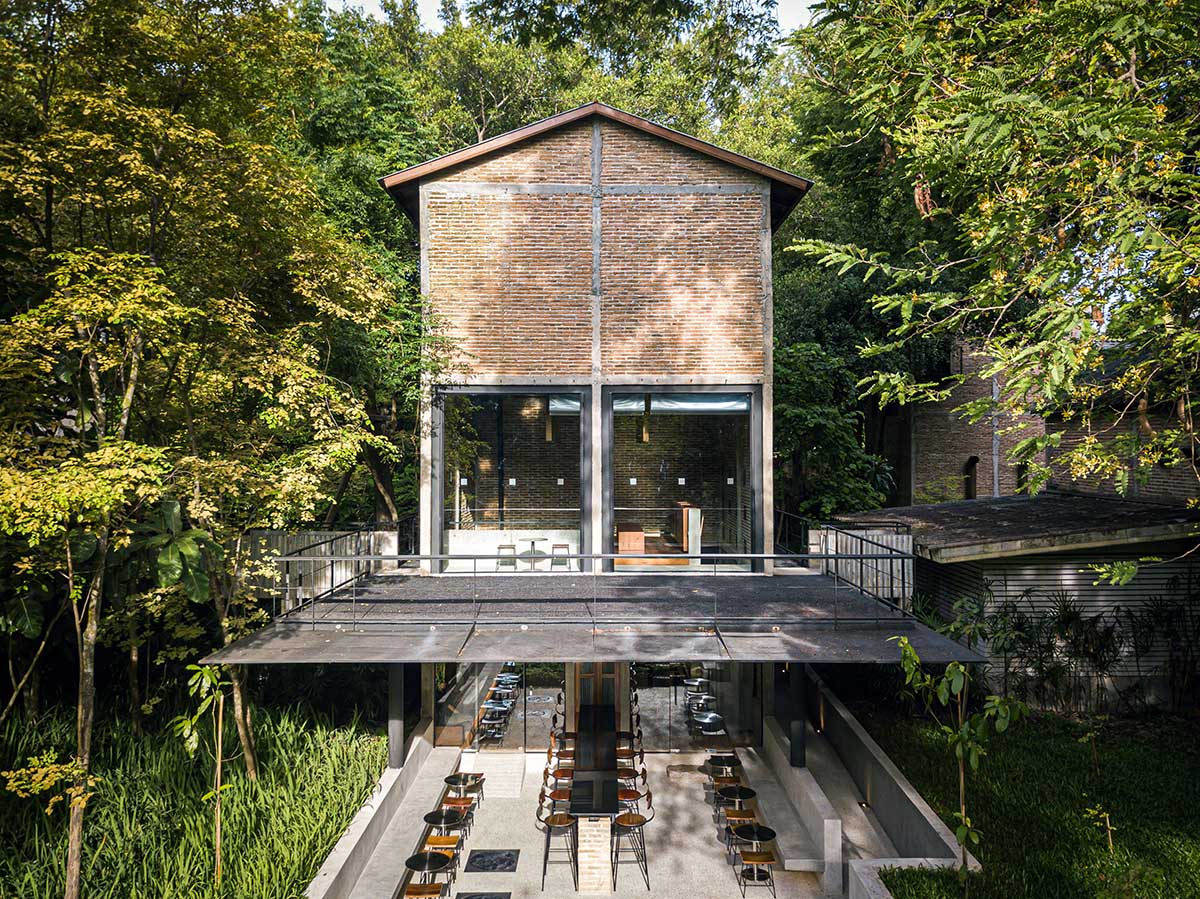
Bangkok-based interdisciplinary practice PAVA architects has created a sunken tea house featuring a thinner slab that forms the terrace of the tea house in Chiang Mai, Thailand.
Named Kaomai Tea Barn, the 210-square-metre building is located within Kaomai Estate 1955, the revitalized project of a multi-decade tobacco processing plant estate in Chiang Mai.
In 2018, Kaomai Estate 1955 was awarded by the 2018 UNESCO Asia-Pacific Awards for Cultural Heritage Conservation in New Design in Heritage Contexts category.
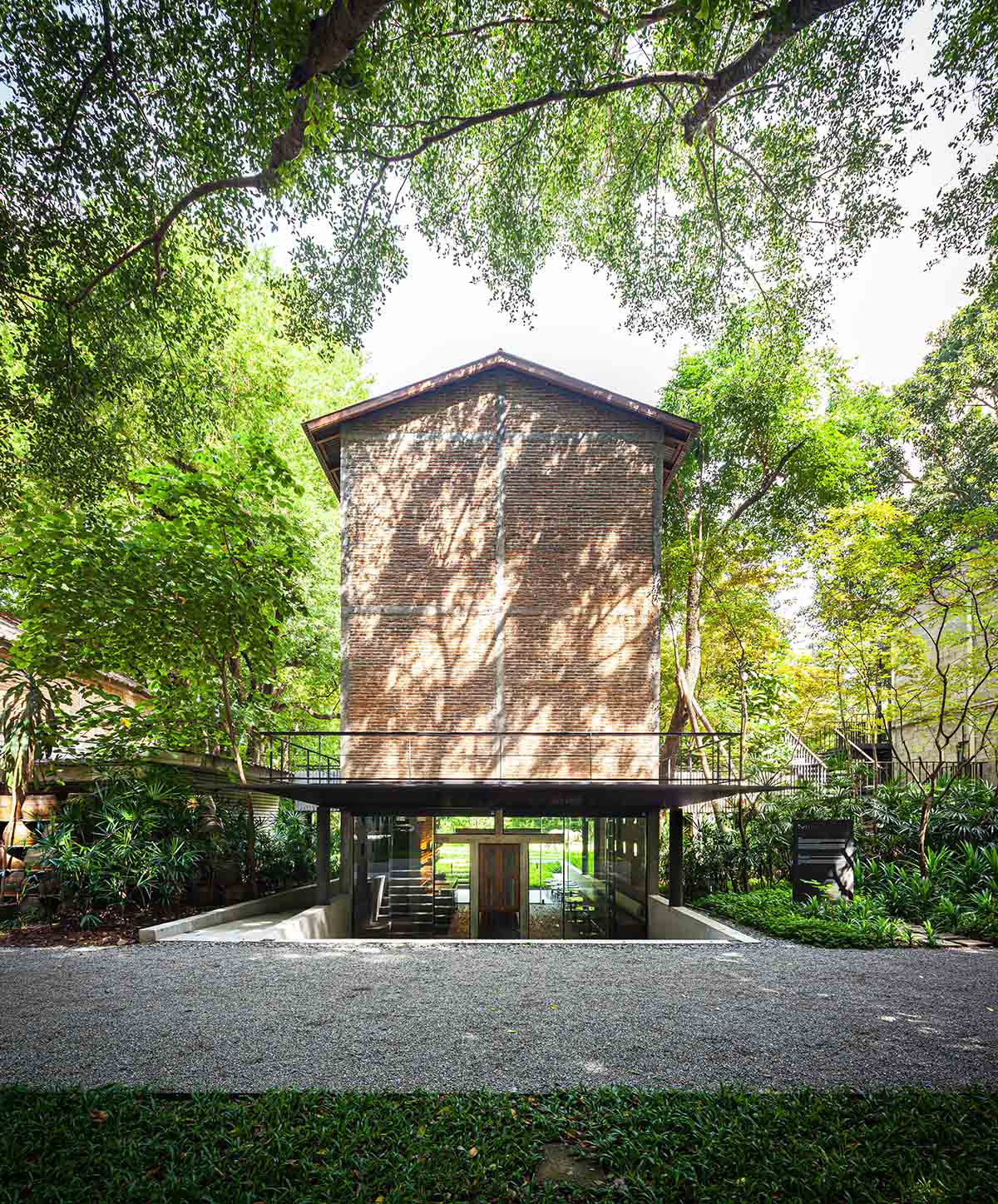
Considering the historical character of the building and the context, the studio converted a tobacco drying barn into a new tea house that is partly sunken from the front street level.
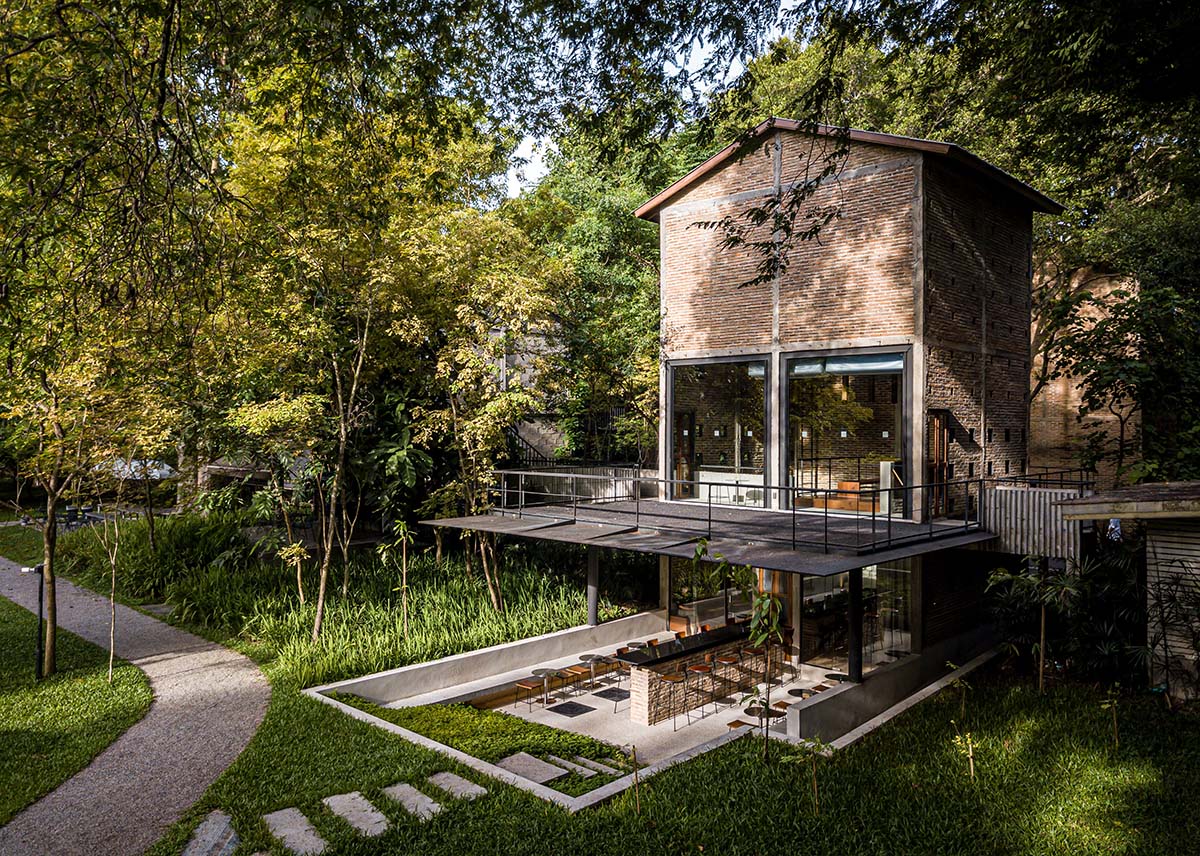
"As part of the incremental plan to unite new commercial programs in the estate, the project location is carefully placed to respect, yet link the surrounding ecology, landscape and existing buildings together," said PAVA architects.
In the estate, the new Kaomai Tea Barn acts as a connection platform to link Kaomai Avenue, the Amphitheater, and Kaomai Cafe both horizontally and vertically.
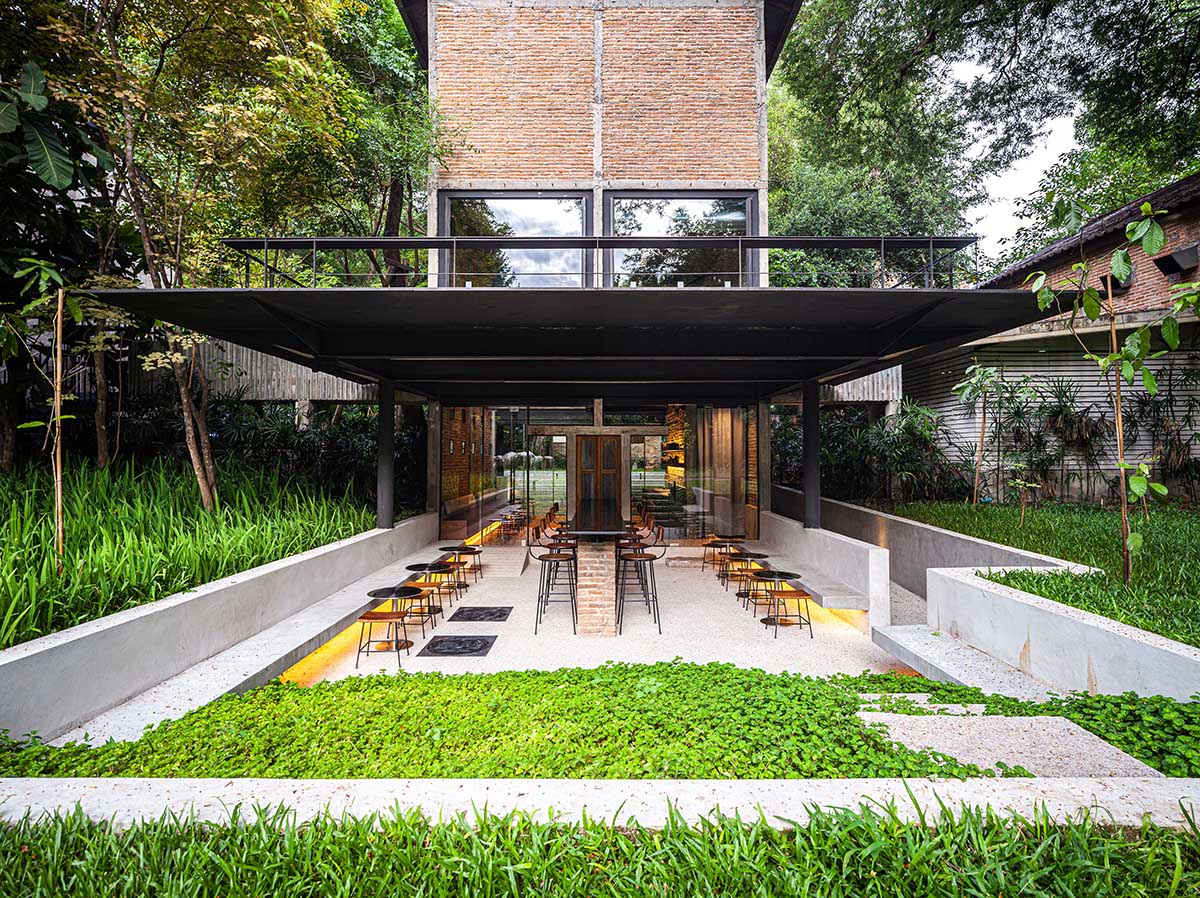
Respecting the conservation principles from the beginning of the project, the studio searched and maintained the existing characters, specificity and authenticity of the heritage barns in terms of architectural dimensions, form, and materials, as well as the repetitive 6x6 meter planning typology.
Based on the parameters taken from the site, the studio created a sunken tea house space which highlights the authentic volume and offers a humble connection between ground level and the multi-floors for its architectural program.
In addition, upper levels were designed to create a unique experience of tea drinking culture.
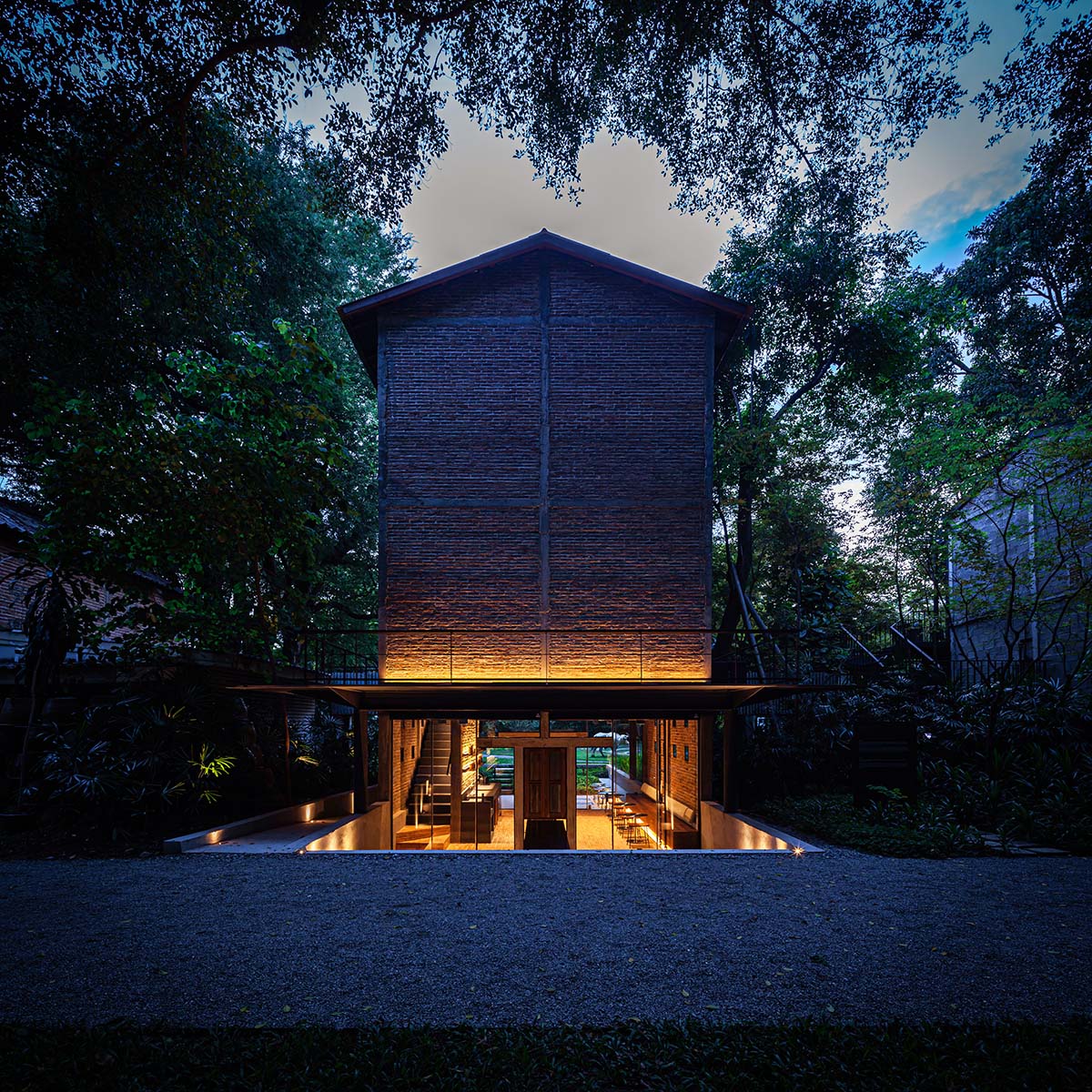
"Tea barn is designed to glow in the dark environment. The lighting features are designed to be hidden as well as to emphasize the values and authenticity of the tobacco drying barn," said the studio.
"To highlight the authentic brick surfaces and unique vertical interior space, linear lighting and smooth glowing downlight are subtly integrated with the locally crafted concrete, timber, and dark gray structure."
"Due to the proposed lighting design, the contrast of the tobacco drying barn solidness and the new opening space introduces the humble design experience along the historic routes, the existing architectural, and natural heritage," the team added.
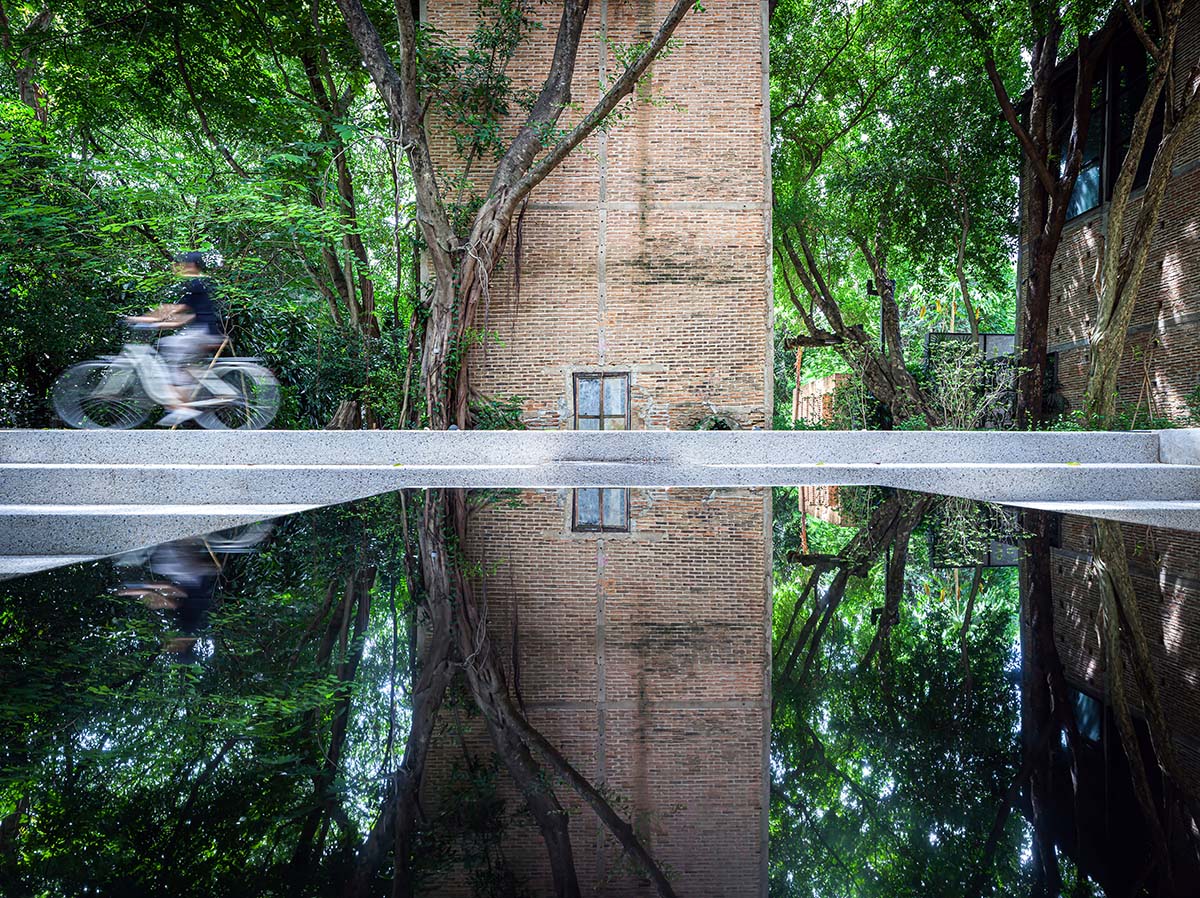
The design approach of the barn is based on a “Reconstruction Technique” in which the studio followed as a design methodology "to rebuild the building perception as it used to be, since the existing structure has been deteriorated."
To achieve this, material choice, technique and implementation became the major part of this process, according to the studio. Materials used in the project include brick, mortar, void, columns and beams.
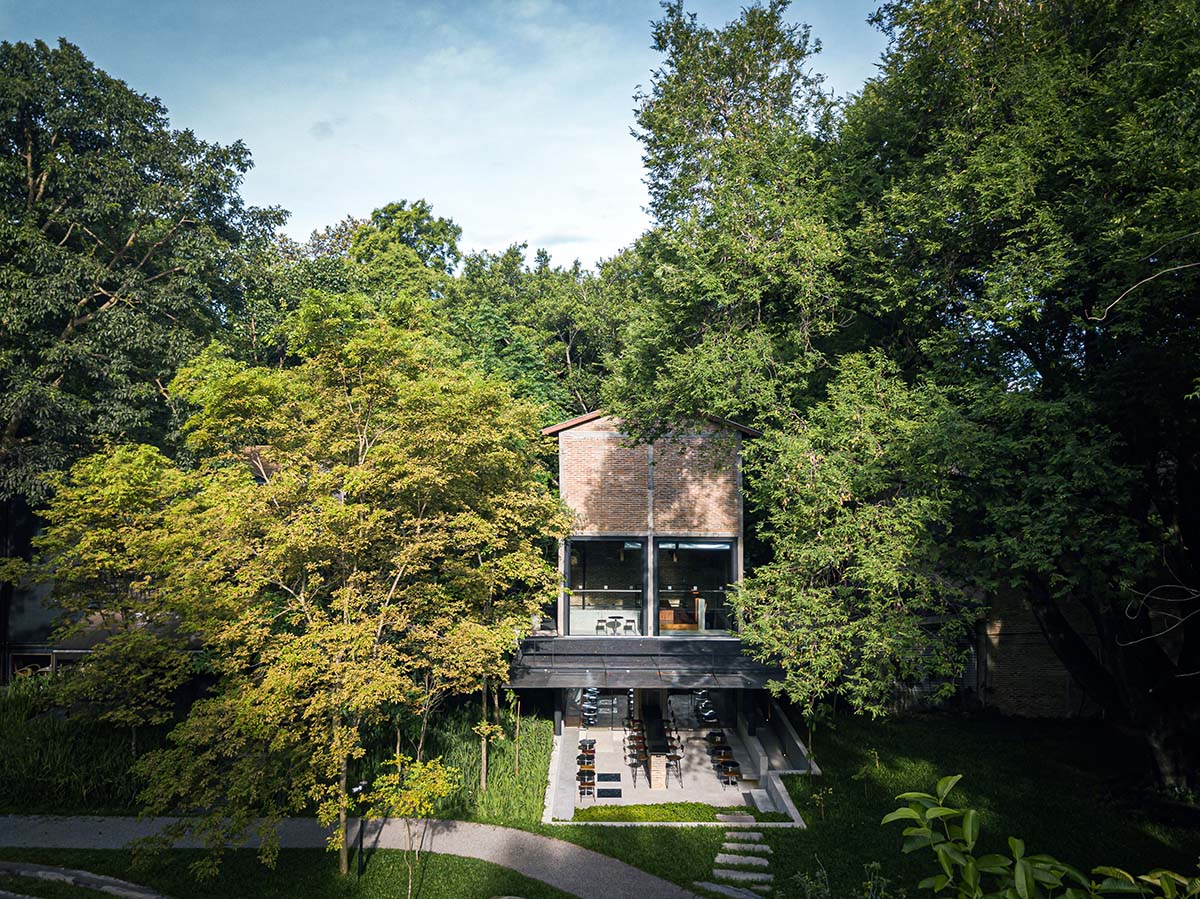
Respecting the barn originality, the studio preferred to reconstruct the preserved bricks by adding modernized steel and reinforced concrete, and according to the team, "they would resurrect an overlooked industrial typology to life again by combining a conservation practice with a contemporary design aesthetic."
The construction of Kaomai Tea Barn was completed under the umbrella of the “Historical and Ecological Tourism” framework, which was another vital part of the holistic masterplan, that could economically, socially, and environmentally grow through time.

"The project once again encourages visitors to appreciate the aesthetic of the preserved tobacco drying barns and rich nature, as well as learn about the local history, native plants and ecology on site," said the studio.
"The project brings back the role of the tobacco processing estate in the past, serving as the social and economic center of the community and enhancing nowadays’ spirit of local inclusion and creating social sustainability."
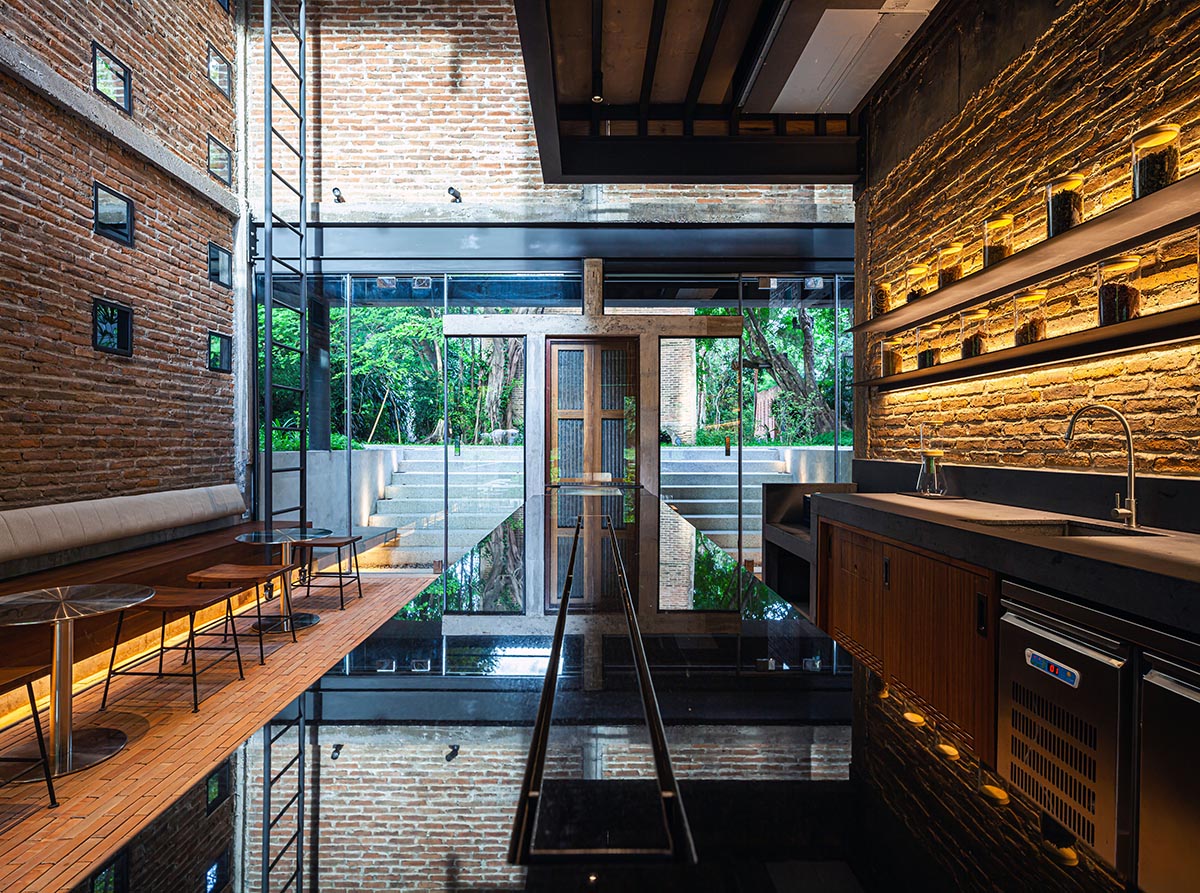

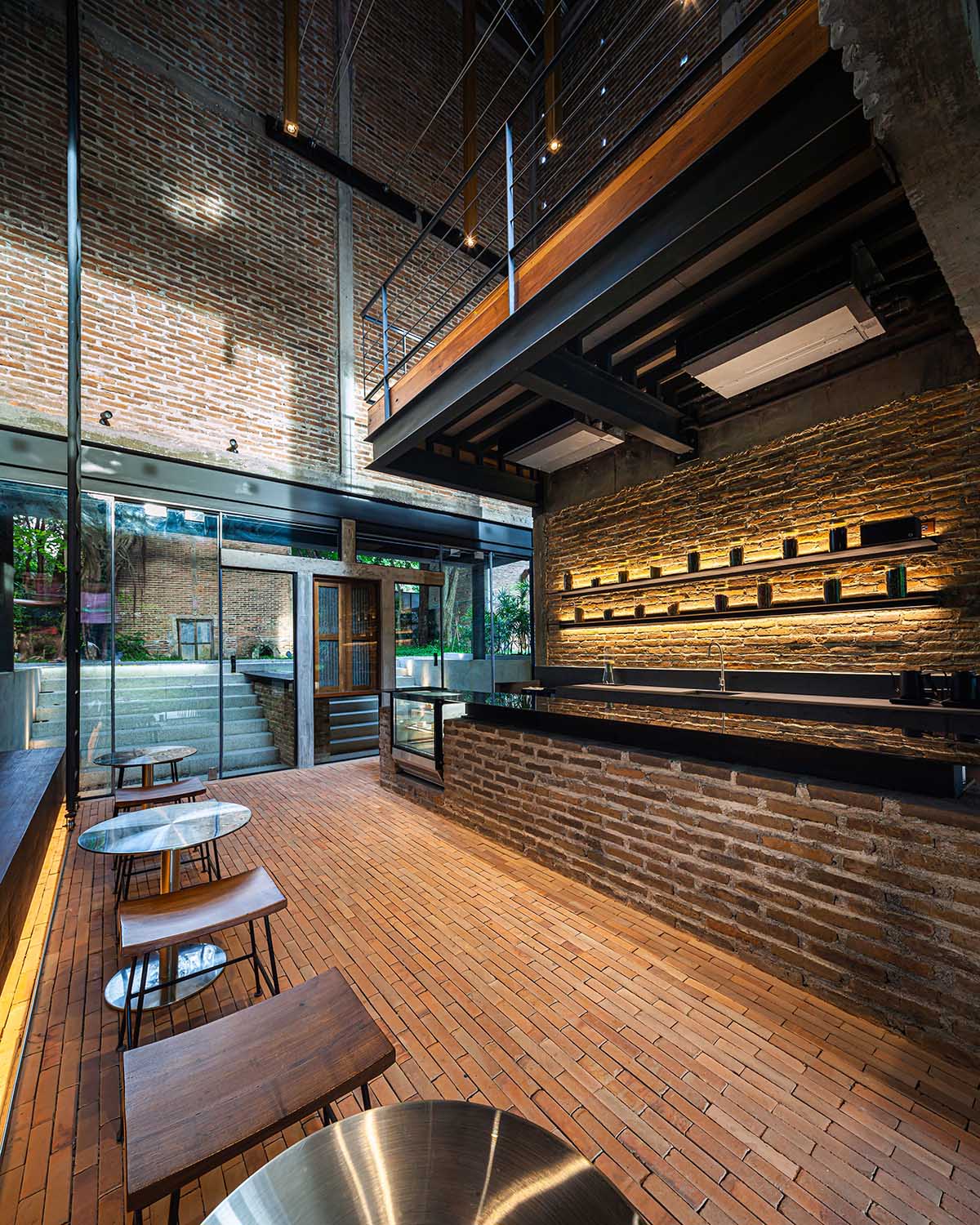
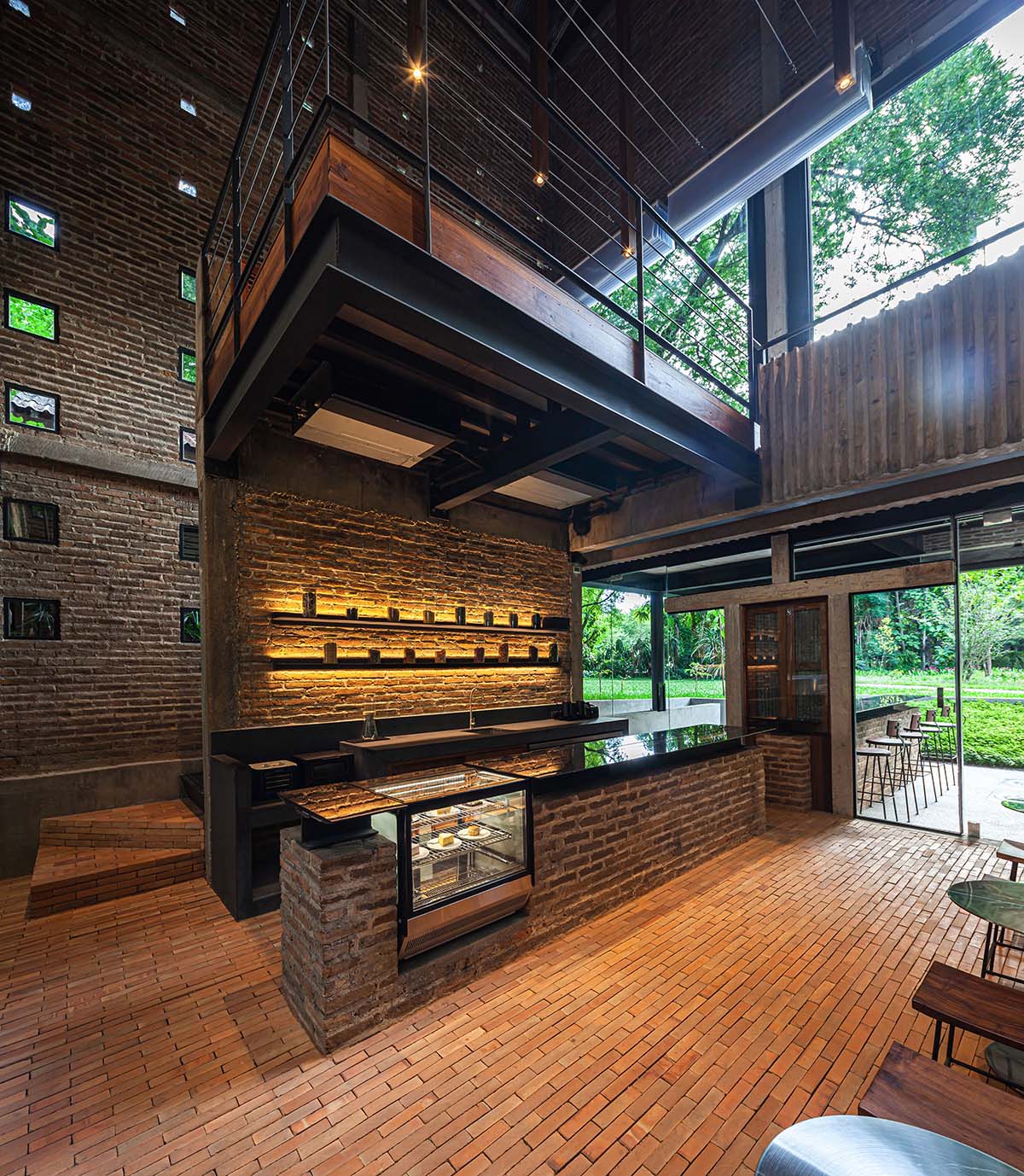
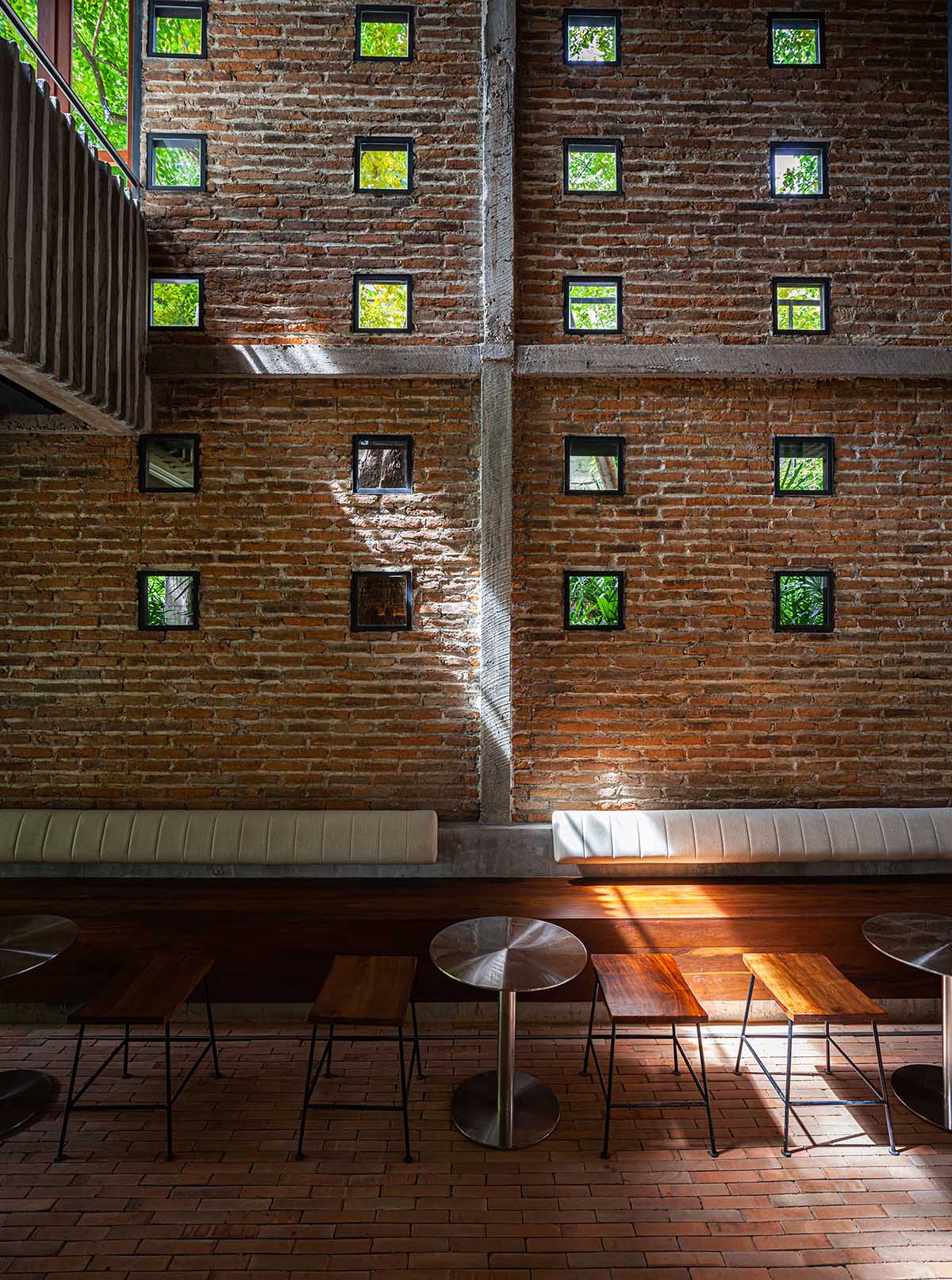
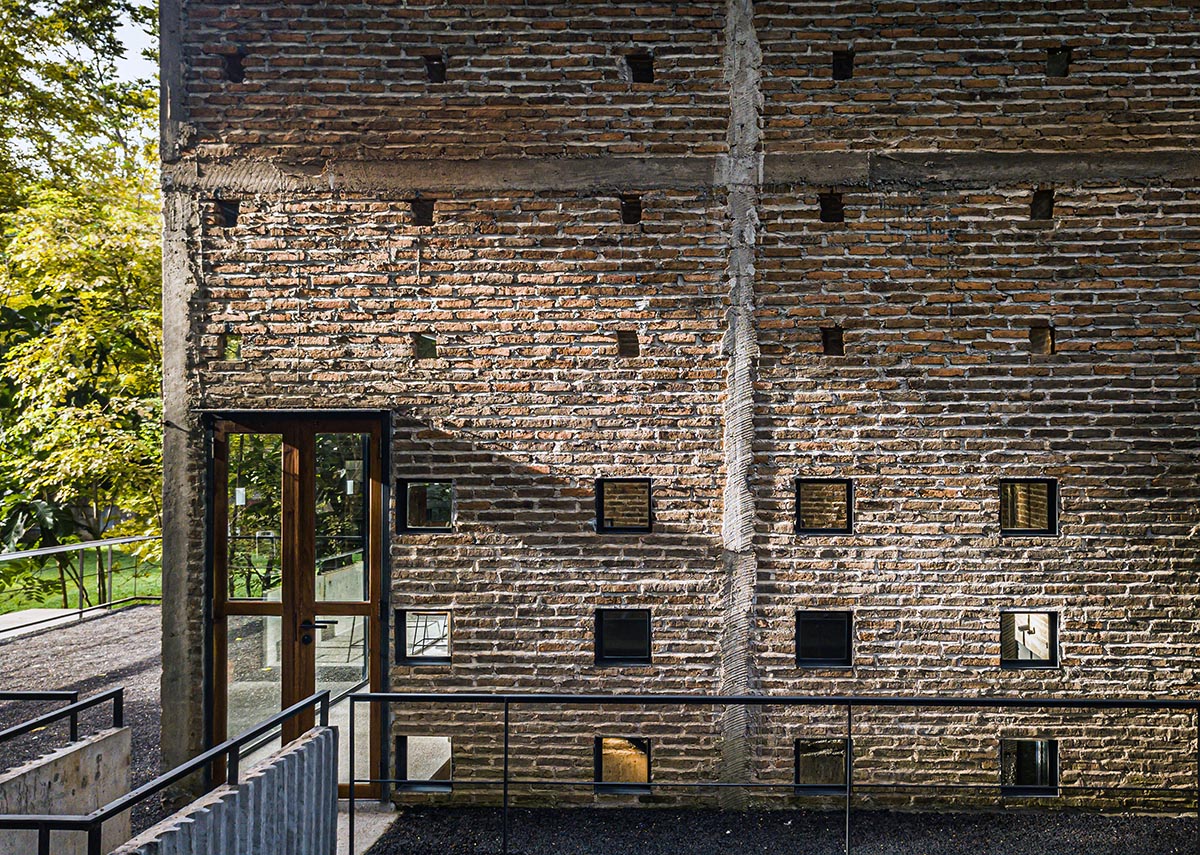
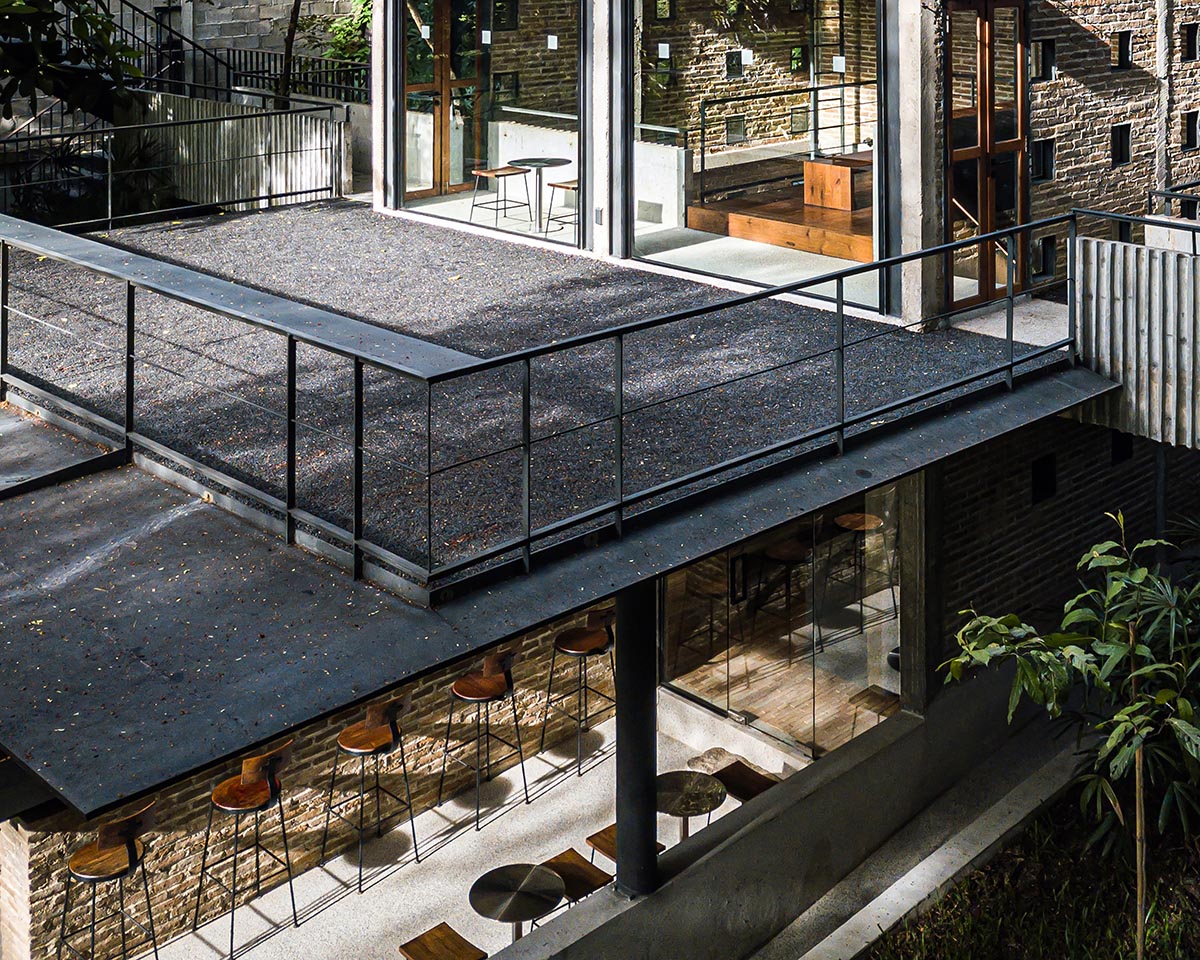
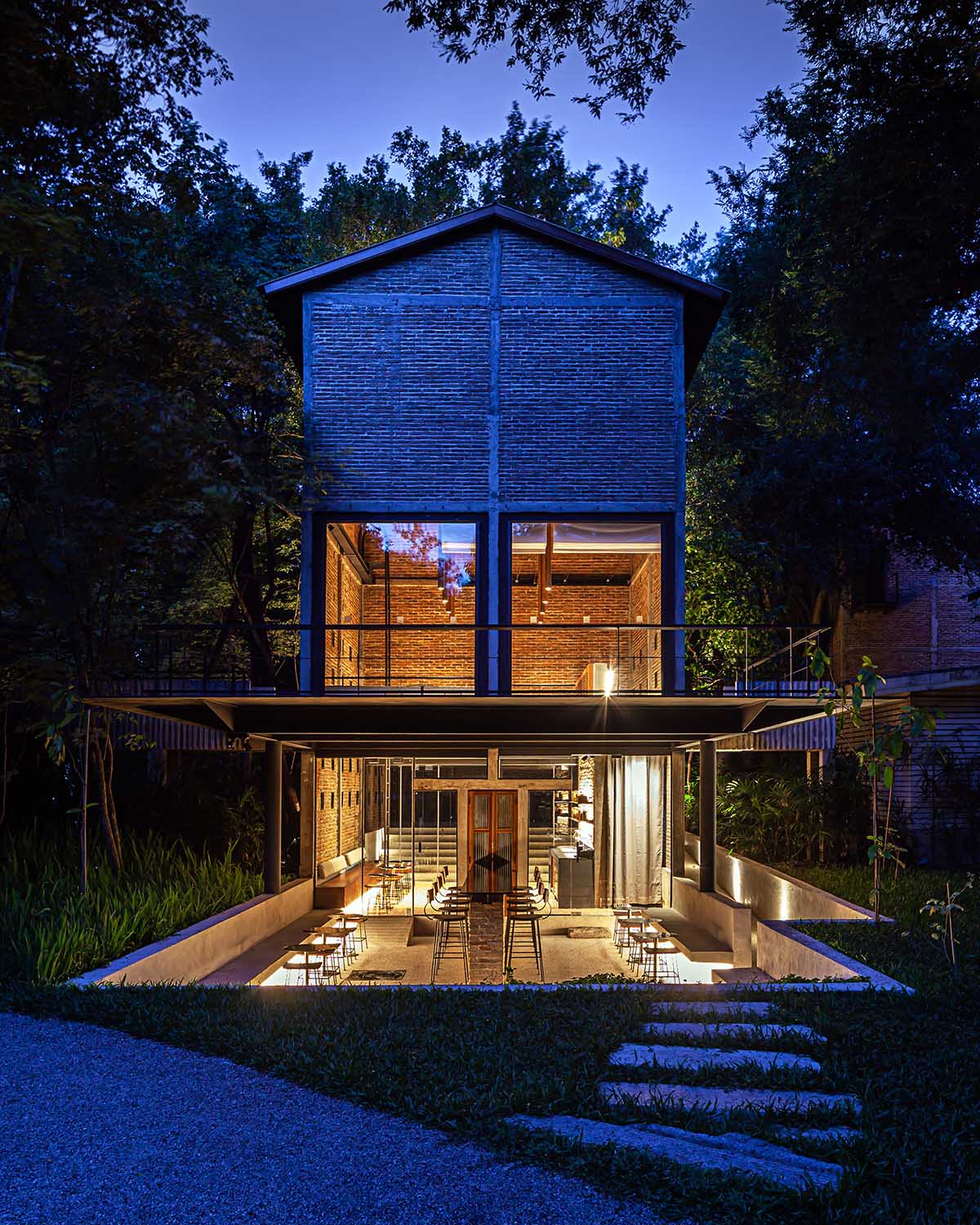
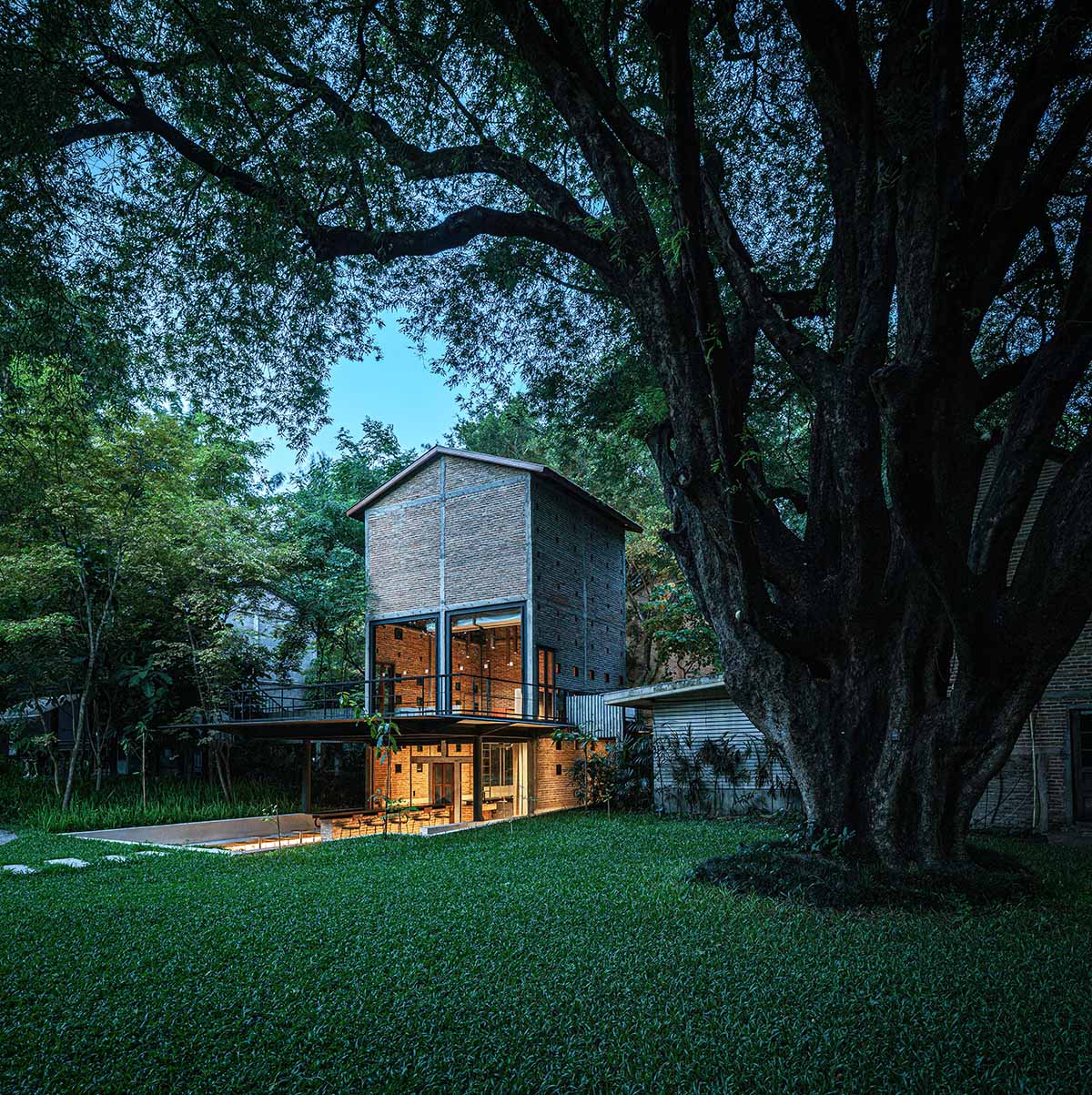
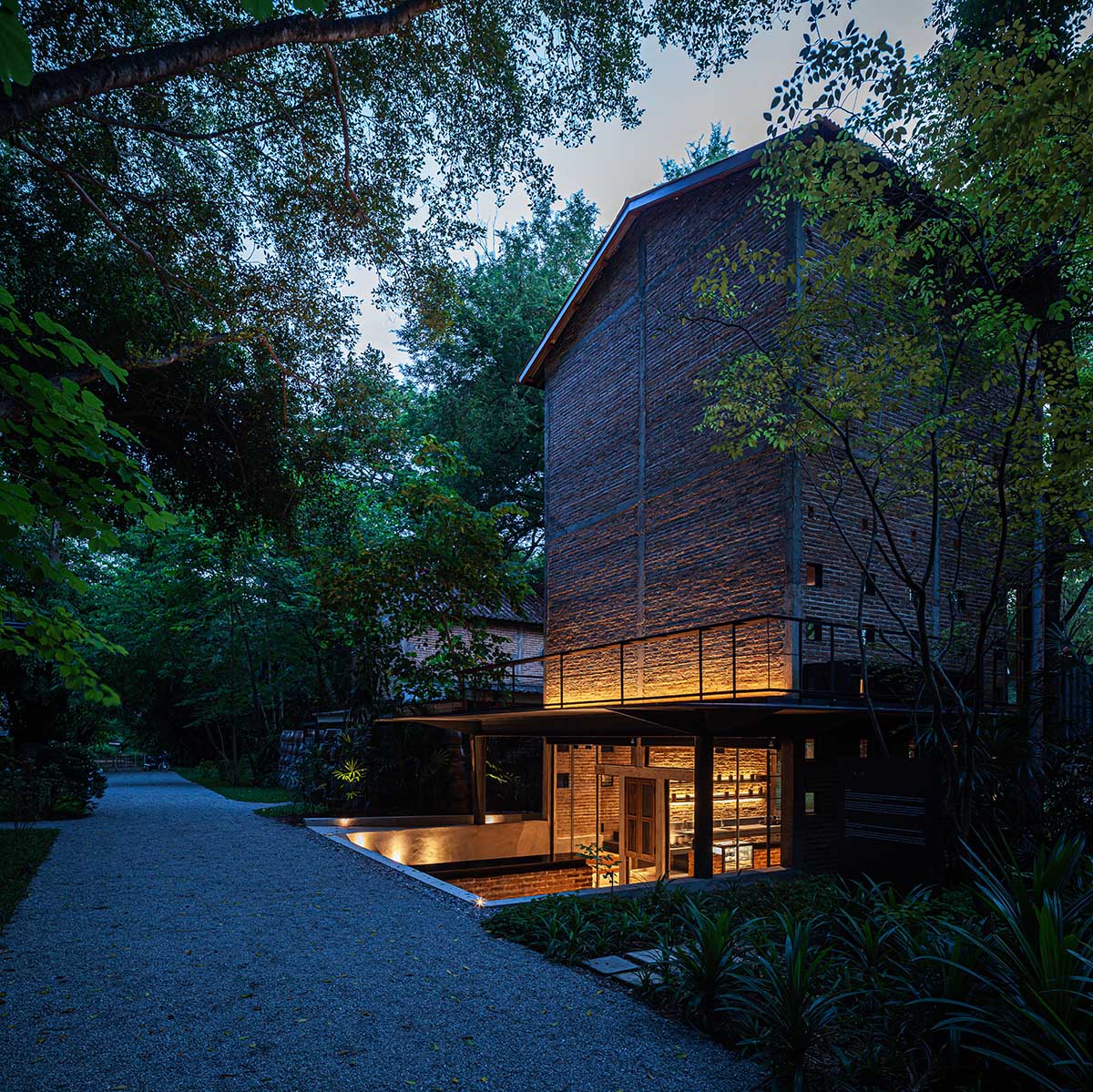
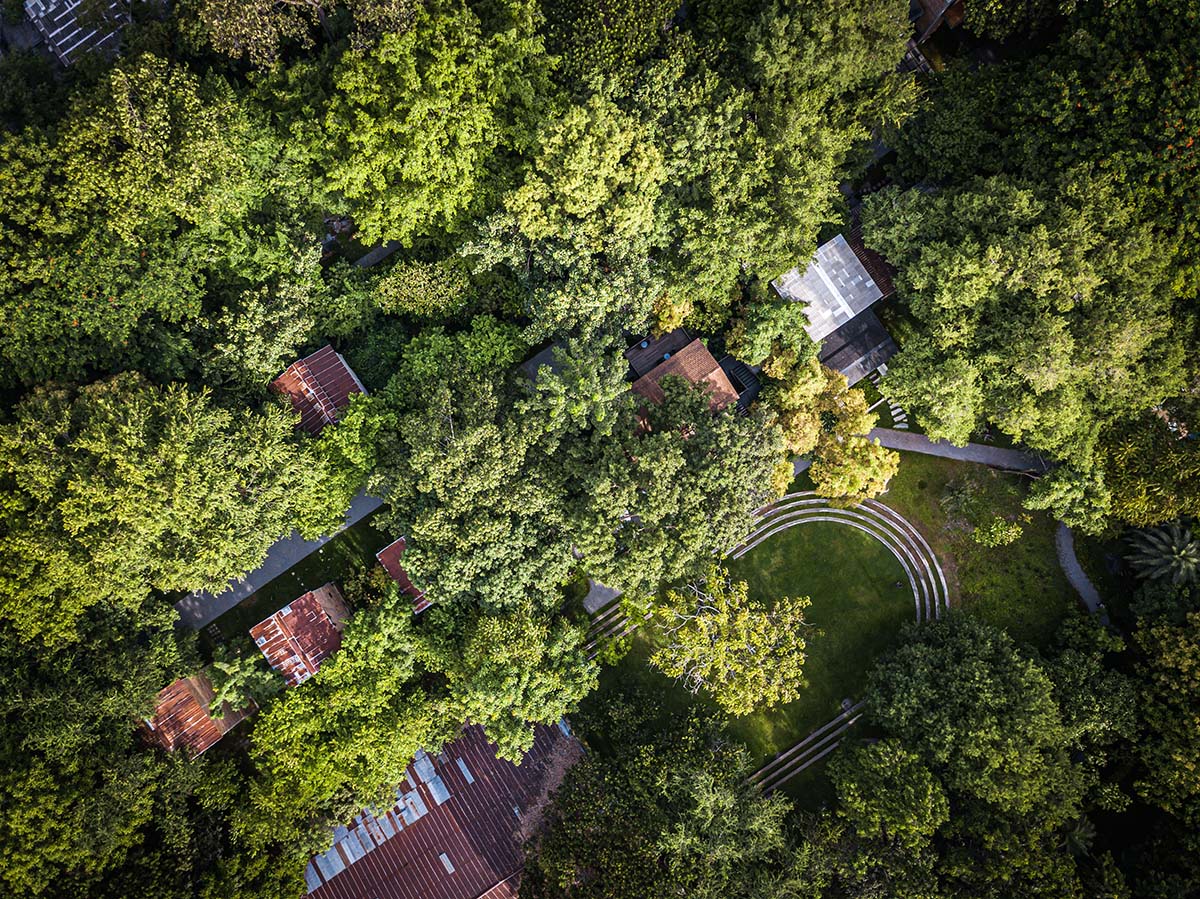
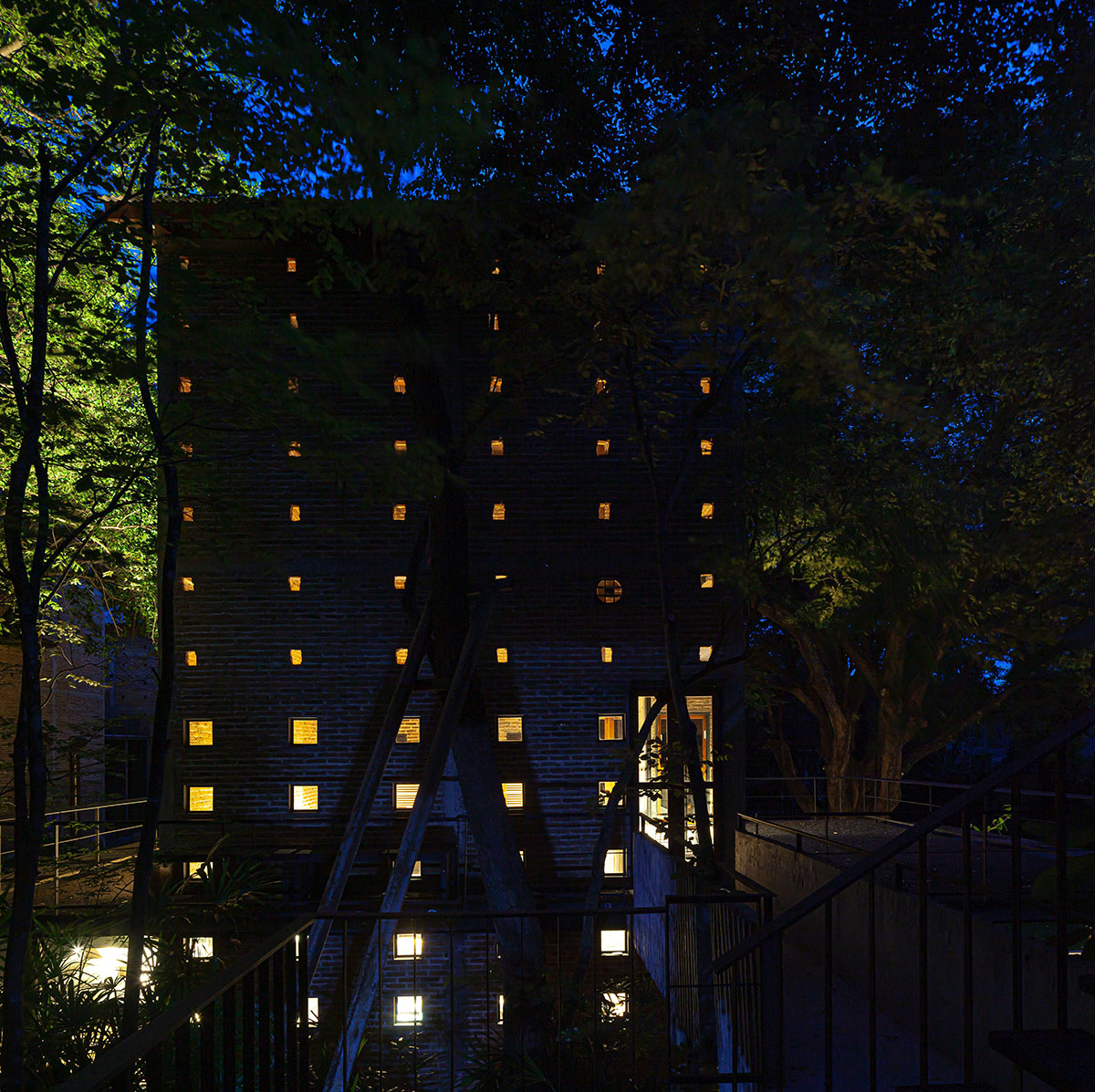
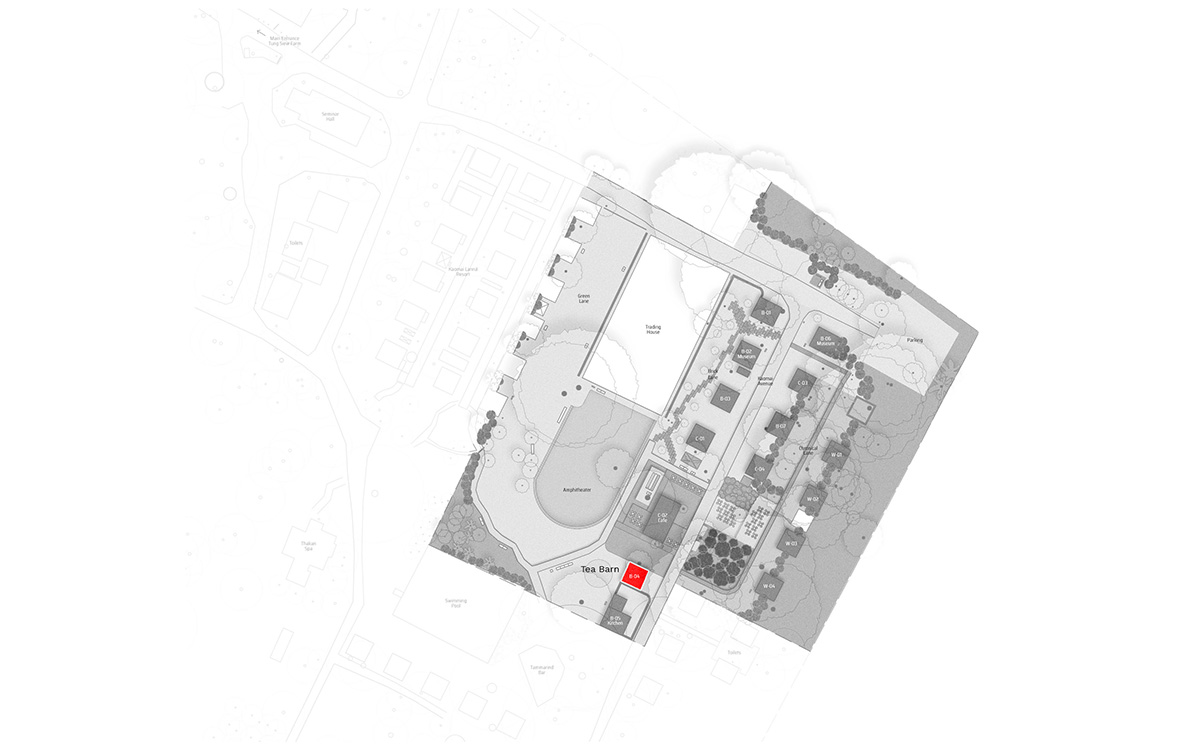
Site plan
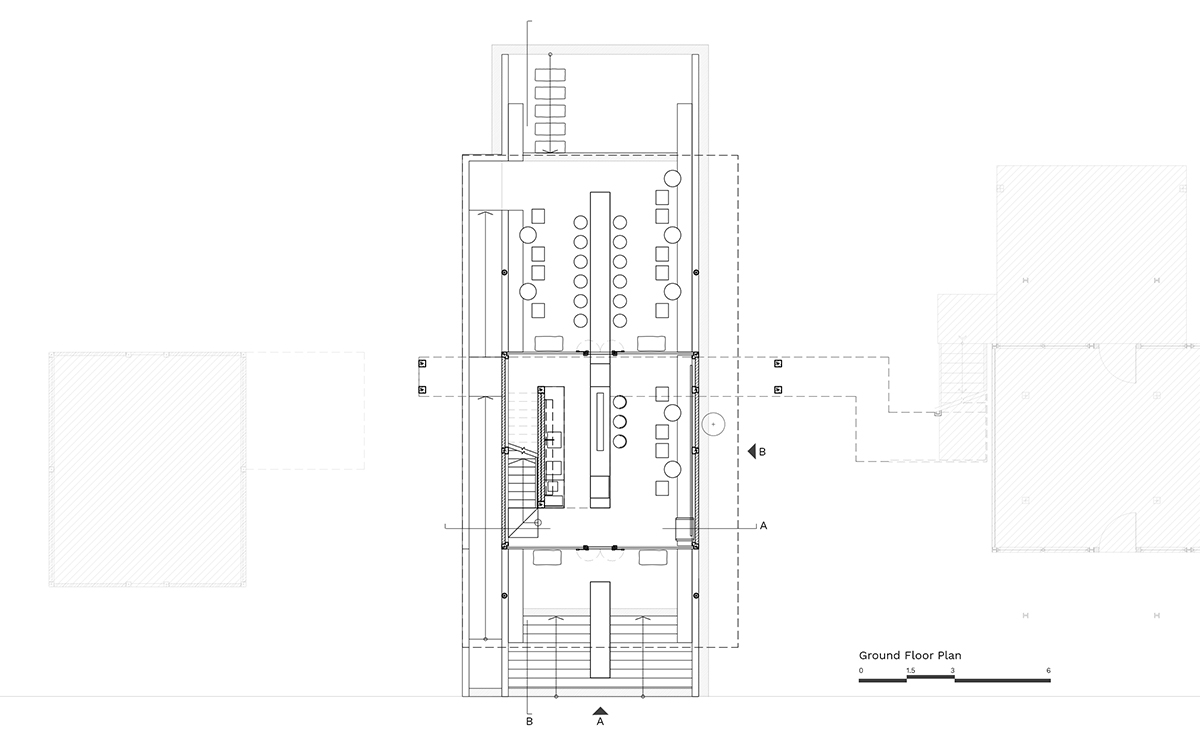
Ground floor plan

First floor plan
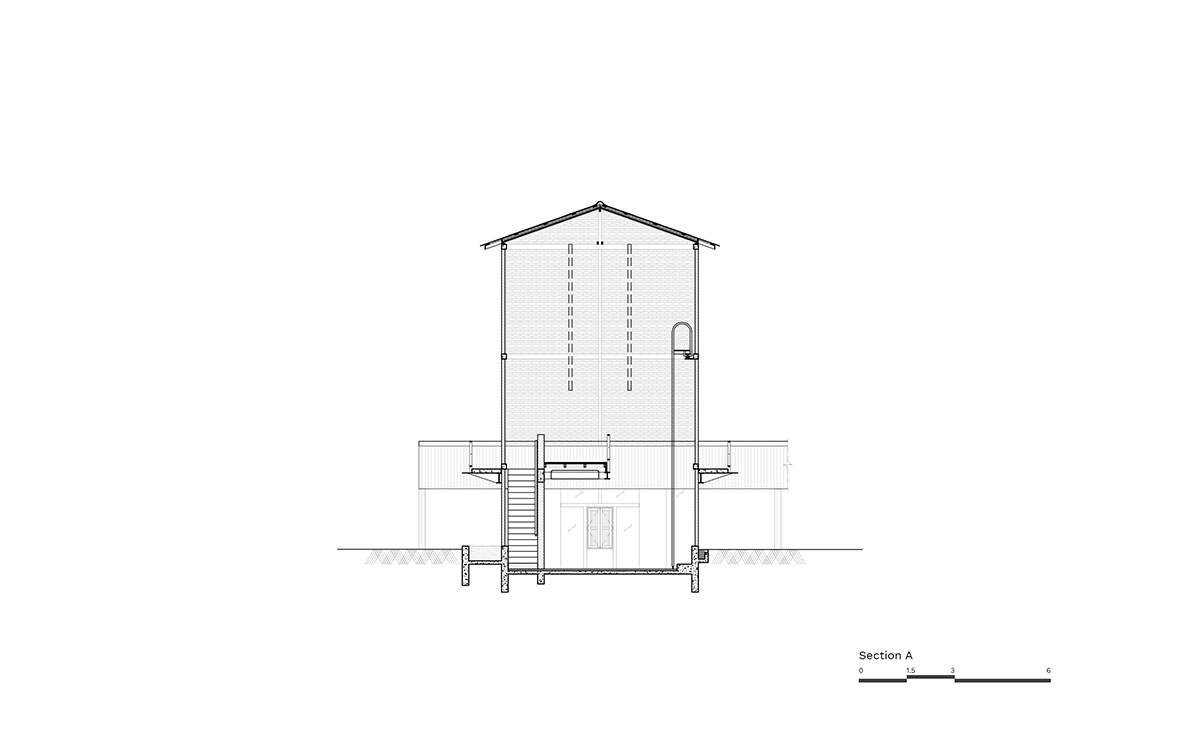
Section AA
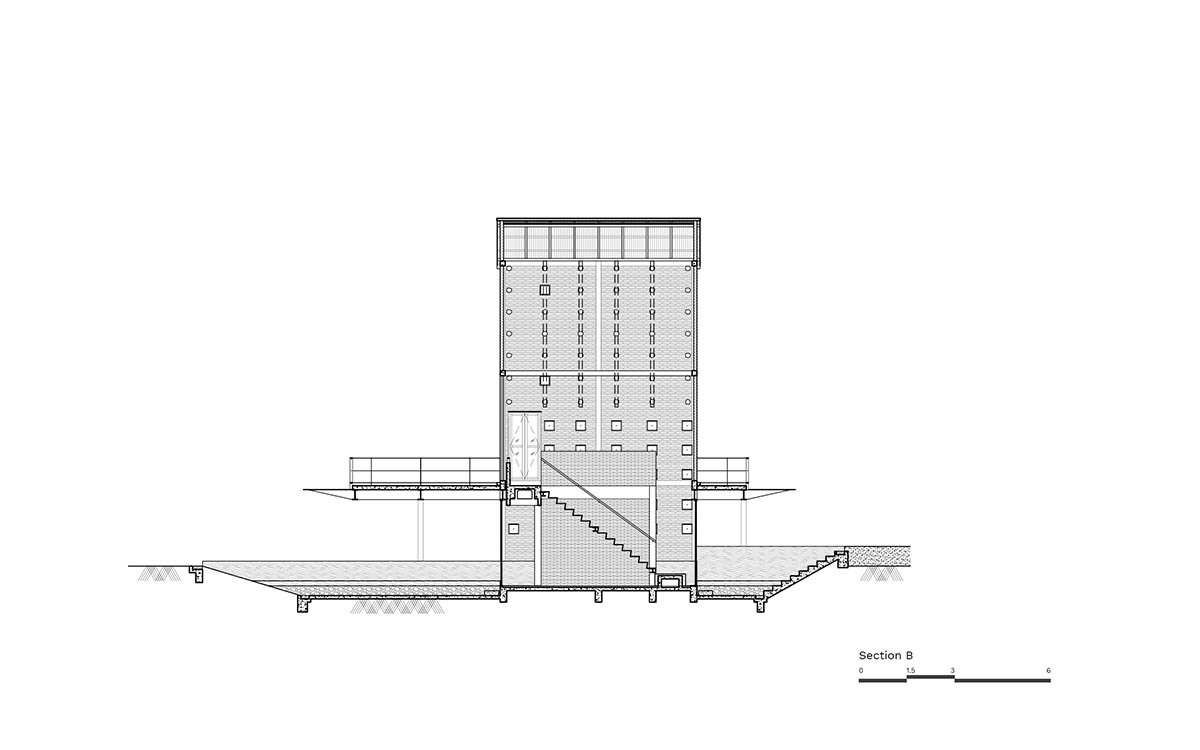
Section BB
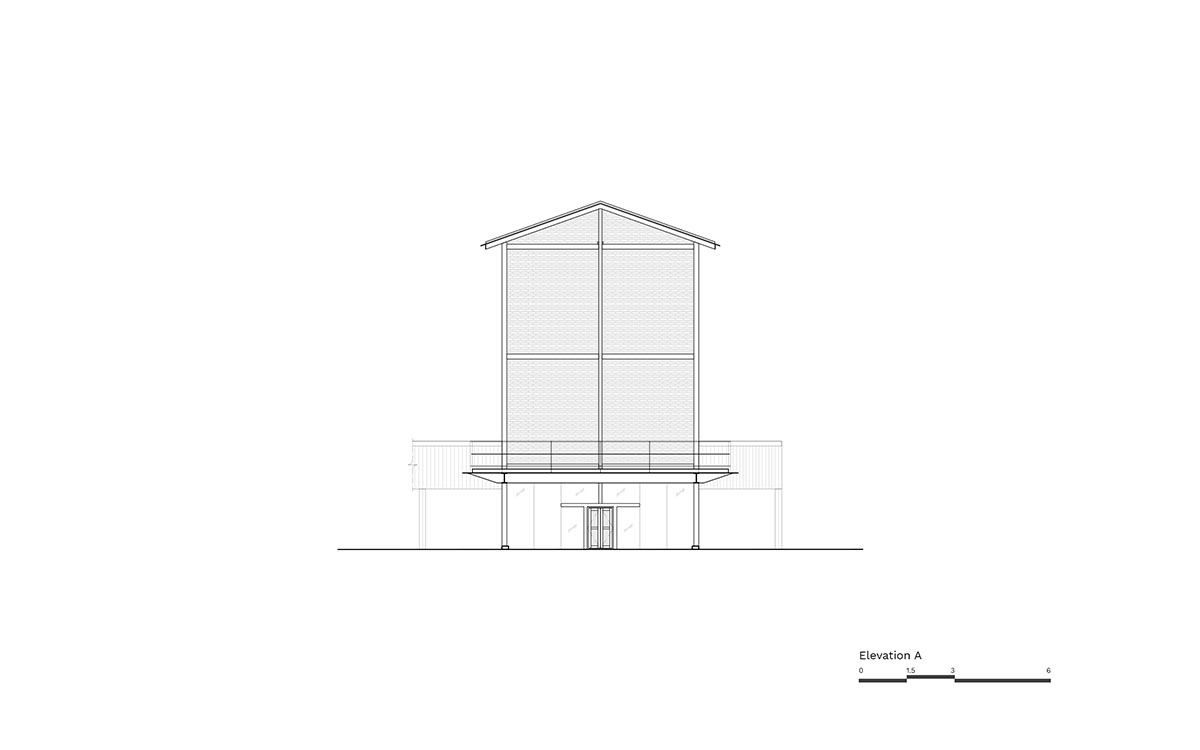
Elevation A
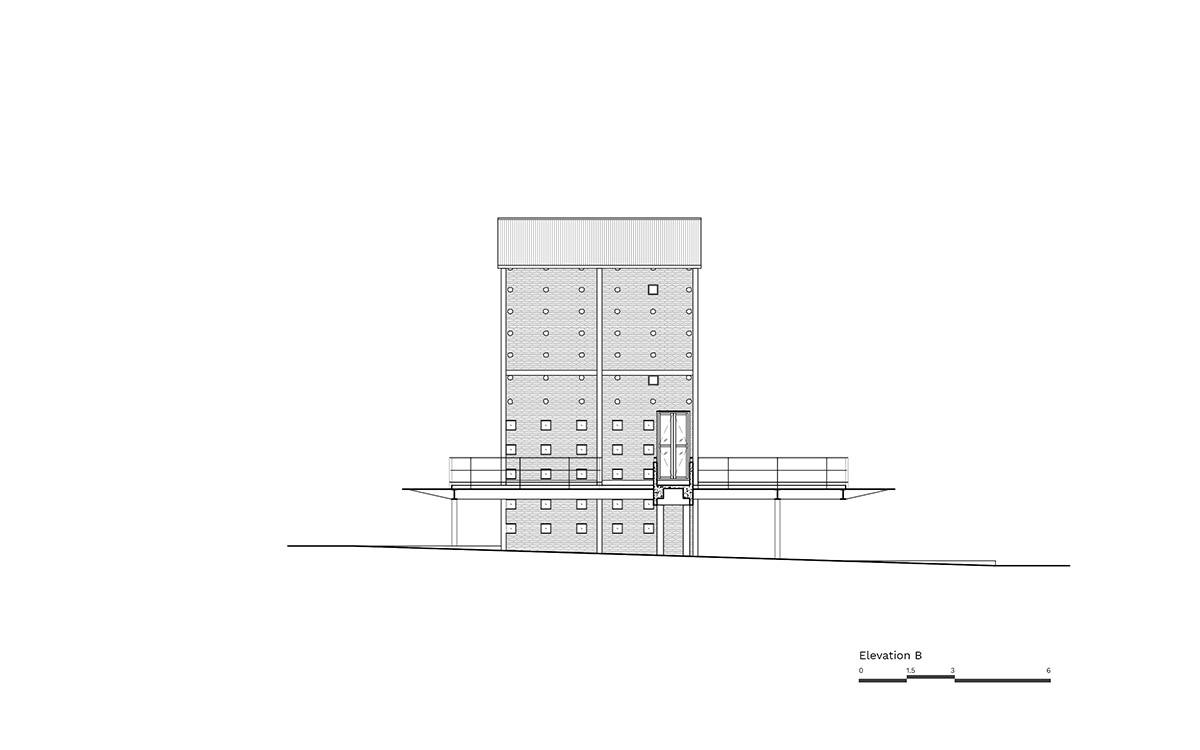
Elevation B
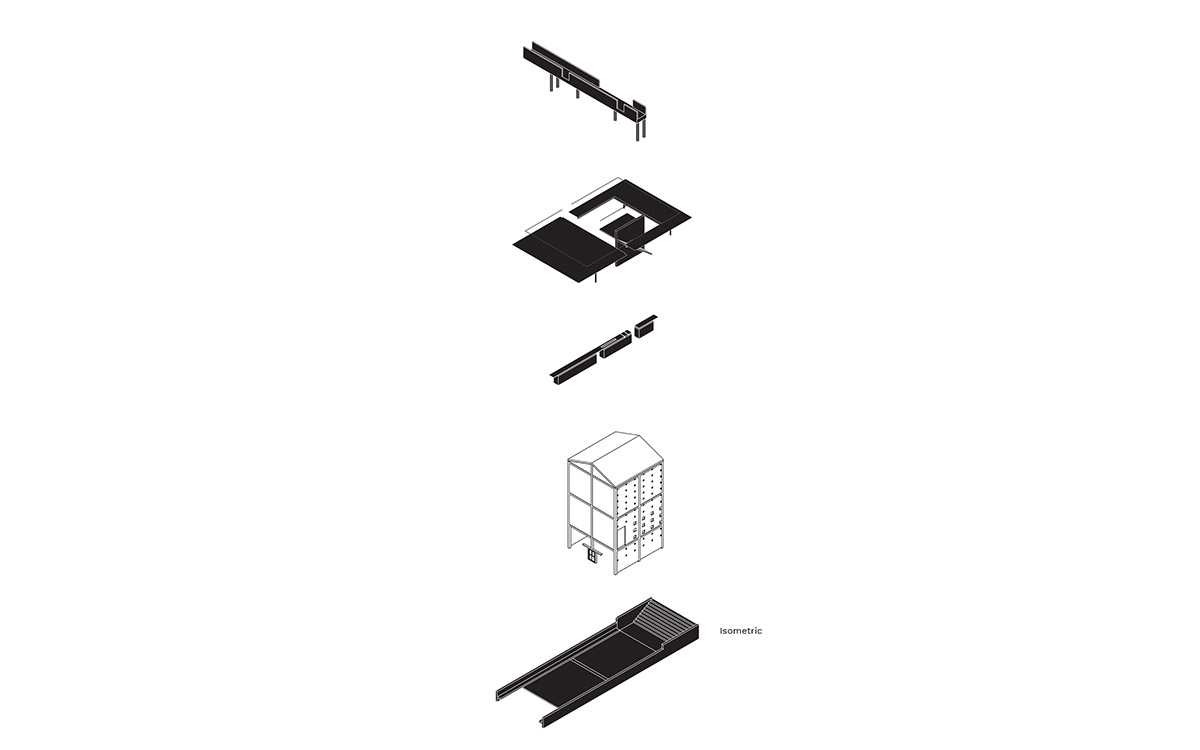
Exploded axonometric drawing
Based in Bangkok, PAVA architects was founded by Pacharapan Ratananakorn and Varat Limwibul. The firm's design approach is based on "a process" that defines a system rather than a singularity and sublime.
Project facts
Project Name: Kaomai Tea Barn
Architect: PAVA architects (Varat Limwibul and Pacharapan Ratananakorn)
Interior Architect: PAVA architects
Landscape Architect: PAVA architects
Completion Year: 2022
Built Area: 210 m2
Project Location: Sanpatong, Chiang Mai, Thailand
Program: Tea House
Client: Kaomai Estate 1955
Lighting Design Consultant: Vasapol Teravanapanth
Structural Engineer: Nil Khamaoy
Contractor: Nil Khamaoy and Kaomai Team
All images © Spaceshift Studio.
All drawings © PAVA architects.
> via PAVA architects
